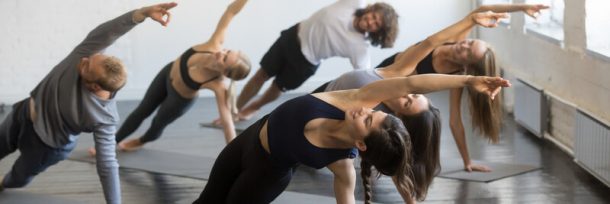Pilates: Origin, History, and Evolution
December 2, 2022
Though some might assume that Pilates is a modern fitness craze born from diet culture and social fitness classes, that is certainly not the case. Pilates has been practiced for over a century, originally created and developed by one man during World War One. It has evolved through the years and incorporated modern exercise science into its practice, while staying true to its roots and core principles.
If you’re a fan of Pilates or simply interested in history, this blog is for you. We’re going to explore the origin of Pilates and how it evolved through the years to become the fun and effective exercise technique that we use around the world today.
The Invention of Pilates
The form of exercise we know as Pilates is named after its creator, Joseph Pilates. Born in Germany in 1883 to a gymnast father and a naturopath mother, Joseph himself became a competent gymnast, diver, boxer, and skier.
In 1912 Joseph was living in England and working as a self-defense instructor. As the First World War took over the globe he found himself held with other German nationals at the Knockaloe internment camp on the Isle of Man, where he developed his own exercise method and practiced the techniques with his fellow internees. However, it was not yet called Pilates – in Joseph’s lifetime, he referred to his exercise techniques as “Contrology.” Many of his first students in the internment camp suffered from various injuries and ailments, which allowed Joseph to tailor his Contrology techniques to act as a successful method of recovery and rehabilitation.
Following his four-year internment, Joseph continued to develop his technique before emigrating to the United States in 1926. He and his wife, Clara, opened a fitness studio in New York in which they continued to develop and teach Pilates to a range of clientele who were looking to hone their abilities or recover from injury. While Joseph was the man behind the method, it’s said that Clara was the primary teacher in the studio. With limited English to work with, they relied heavily on hands-on correction to teach the method. Many dancers attended Joseph and Clara’s studio, as well as a handful of celebrities of the time including famous dancers, authors, and actors. Among the original Pilates athletes, about 60% were men.
Equipment and Methodology
If you enjoy Pilates as part of your exercise routine, you likely know that there is a range of equipment that may be used to accompany certain exercises. As Joseph Pilates developed and honed his initial Contrology techniques he also created and utilized equipment, which he referred to as apparatus.
While in internment, Joseph made use of hospital beds rigged with springs in order to provide resistance while exercising. He continued to develop various pieces of equipment to accompany his exercise techniques as his resources grew, and he ultimately created a range of apparatus, many of which are still used in Pilates today. Among his inventions include early versions of the Reformer (originally called the Universal Reformer), the Cadillac, the Wunda Chair, the High “Electric” Chair, the Spine Corrector, the Ladder Barrel, and the Pedi-Pole.
Joseph believed that physical health and mental health were interrelated, and he referred to the combination of mind, body, and spirit as the “whole-body.” He based his techniques on the pillars of breath, whole-body health, and whole-body commitment. Also integral to Joseph’s methodology were the principles of concentration, control, centering, precision, and flow.
In 1932 Joseph published a booklet titled “Your Health,” followed by another titled “Return to Life Through Contrology” in 1945. These texts, accompanied by the teachings of his former students and apprentices, allowed Pilates to continue on and gain traction even after his death in 1967.
Contemporary Pilates
The Pilates we know and love today is often a combination of modern Pilates techniques alongside the traditional methodology of Joseph’s original methods. The equipment has evolved, and the evolution of exercise science has continued to shed light upon the lasting success of Joseph’s original Contrology concepts. However, contemporary Pilates is still grounded in the philosophy and movement patterns developed by Joseph over a century ago.
Pilates has a unique history behind it, and it’s a tried-and-true approach to exercise that has stood the test of time and only continues to gain traction. If you’re interested in joining in and getting active with some Pilates exercises, contact us at ABsolute Pilates. We offer classes in-studio and online for students of any level of experience looking to work up a sweat and improve their abilities!
